Last year, without much fanfare or hype, SunRace slipped out a new 11-speed wide range cassette called the MX80. We got an exclusive on it, but only by chance after we’d been searching around on the Ison Distribution website for something else. There was no press release, no inspiring YouTube video, and no Insta-breadcrumb clues teased out through social media.
This cassette is kind of a big deal though, and not just because it costs £99 in a world where some cassettes can cost nearly four times that. No, it’s because of its size. Starting at 11t, the MX80 cassette goes all the way up to 50t, giving it a huge 454% range. Sure, it isn’t as big as the 500% range of SRAM’s 12-speed Eagle, but then this is an 11-speed cassette designed to work with existing 1×11 drivetrains. And more importantly, its spread is bigger than Shimano’s current 11-46t cassette (418%). The idea being that you can get more out of your 1×11 setup, without having to buy an entirely new 12-speed drivetrain.
Or at least, that’s the theory.
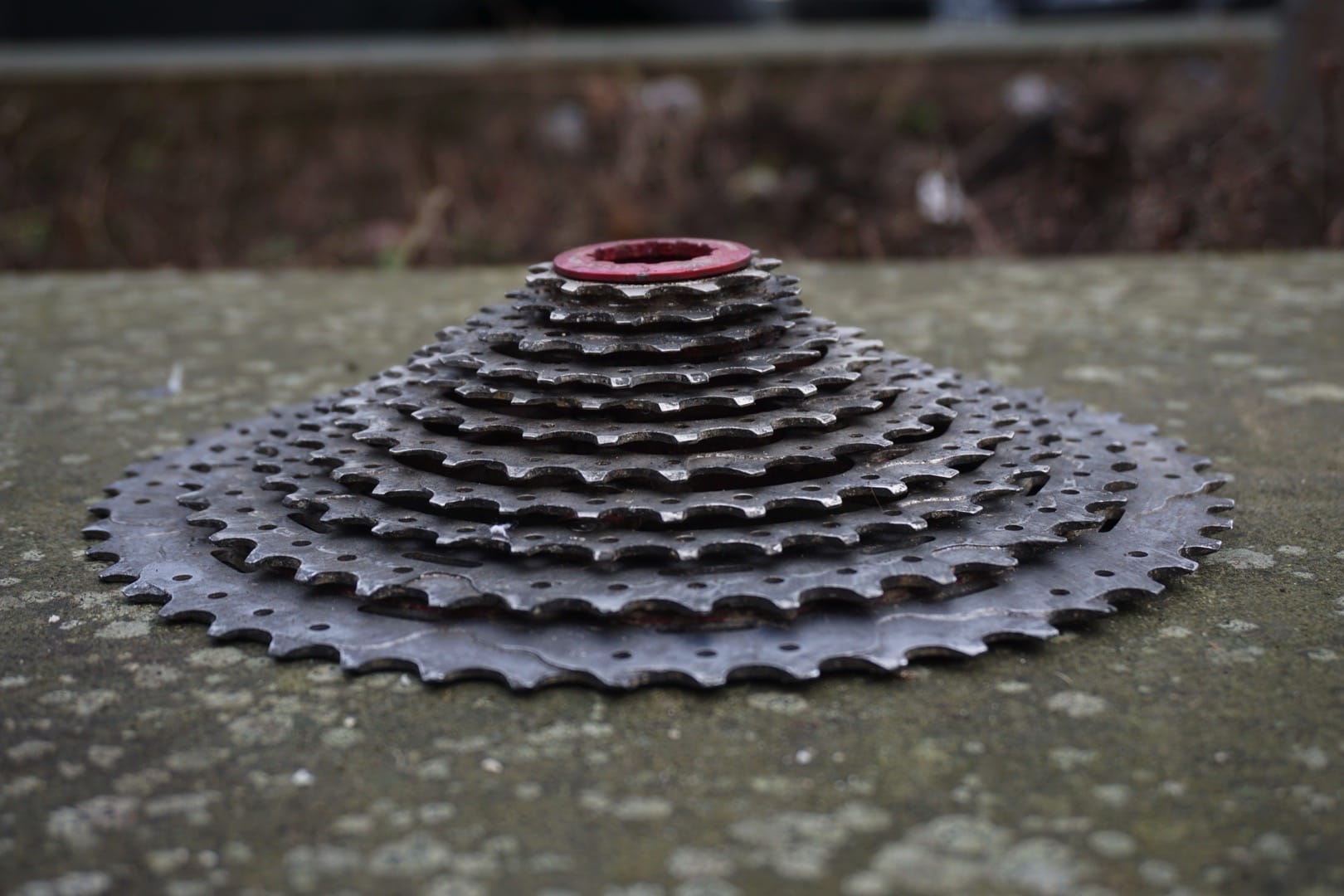
Construction
Like the Shimano XT 11-46t cassette we reviewed, the SunRace MX80 uses alloy for the largest 50t sprocket, though it also uses 7075 alloy for the second largest (42t) sprocket too. The rest of the sprockets are made of steel, which makes sense since given you’ll be spending most of your time in these gears. The first four biggest sprockets are mounted to a red anodized spider, then the next cluster of three sprockets are mounted to another separate alloy spider. The remaining four smallest sprockets all mount onto the freehub body individually.
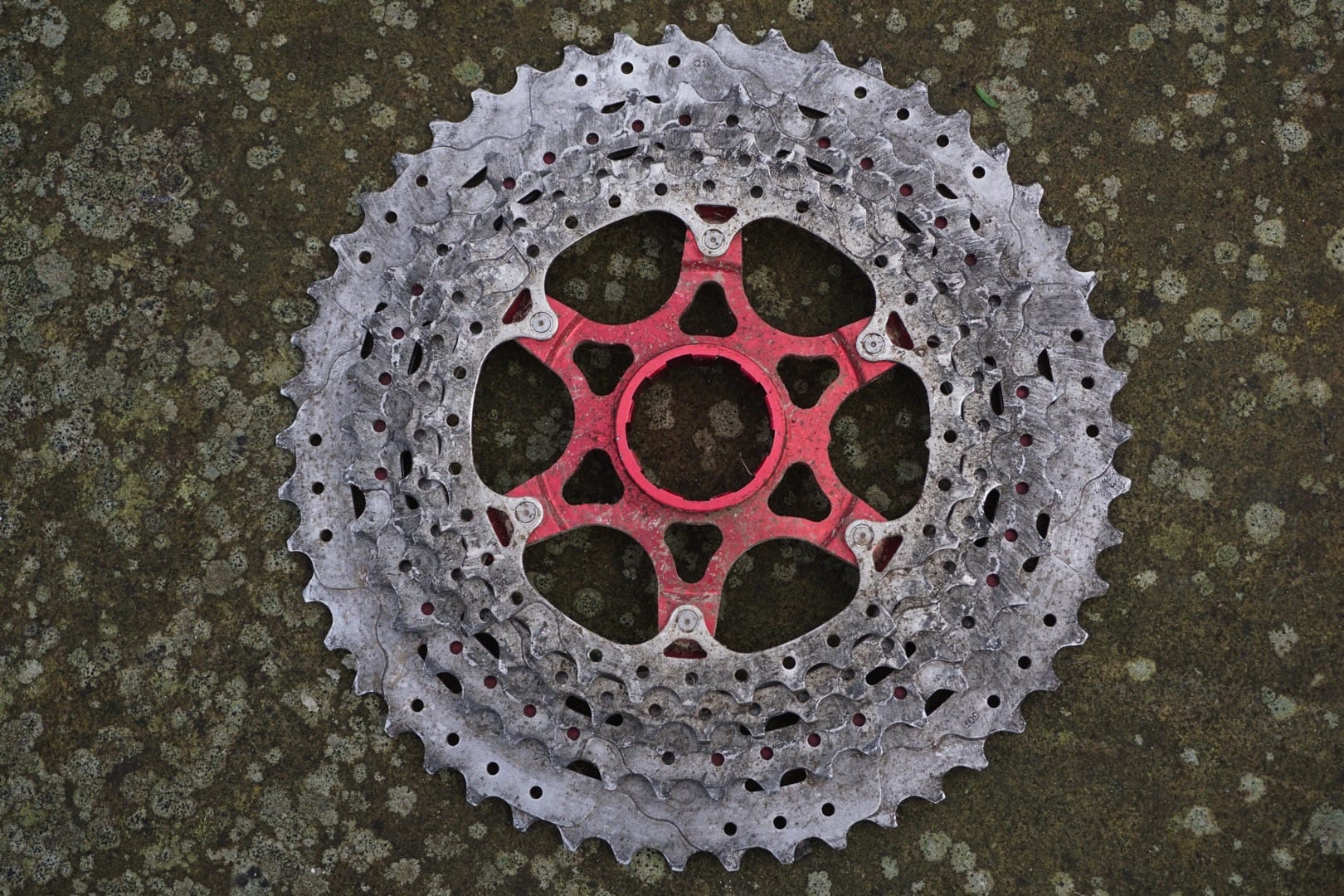
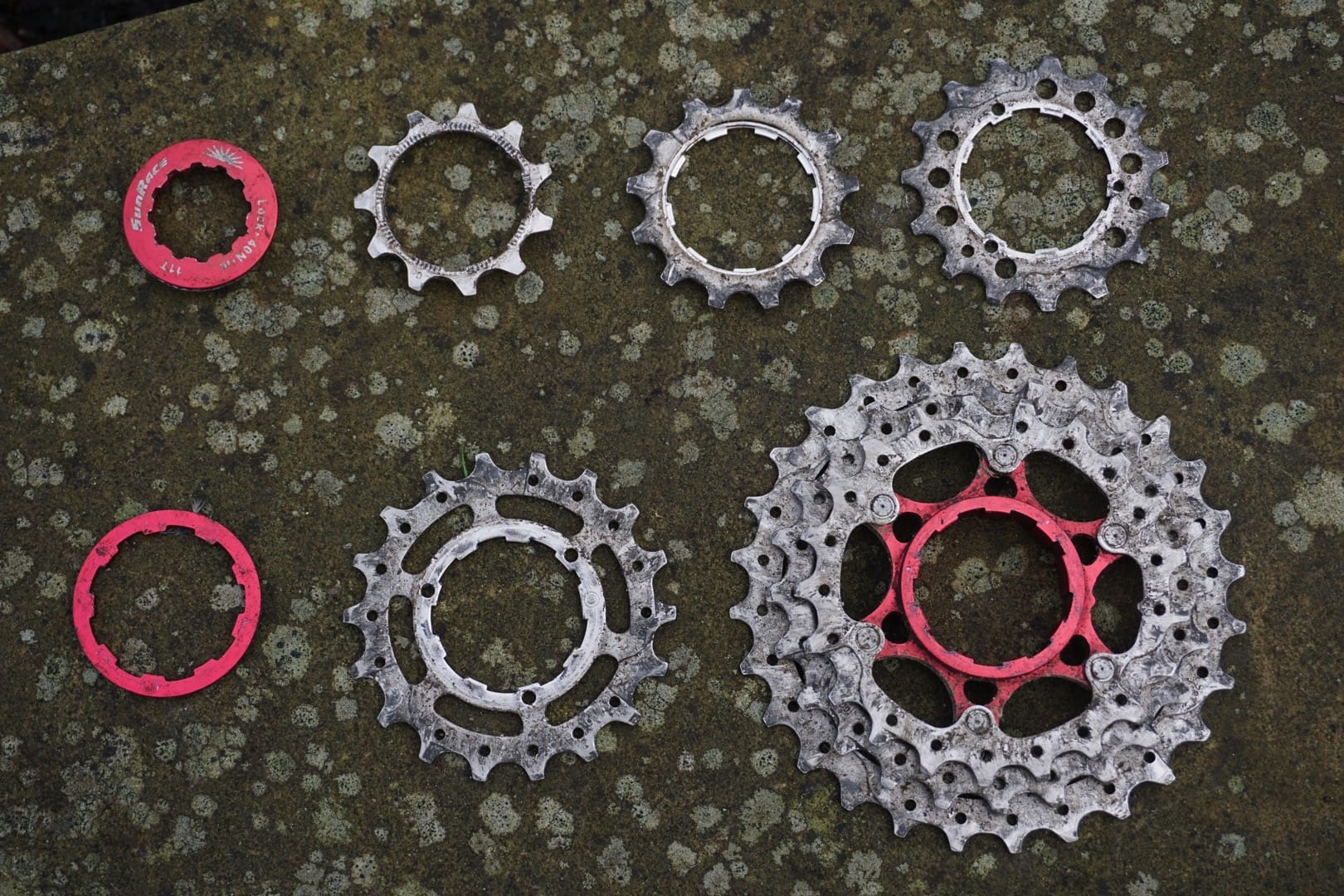
In terms of weight, the MX80 is 526g, which is quite a bit more than the Shimano Deore XT cassette (440g), and a whole lot more than a SRAM XX1 Eagle cassette (390g).
Smooth Steps
The full range of the MX80 is 11-13-15-18-21-24-28-32-36-42-50t. Shifting jumps are spaced pretty evenly from bottom to top, with a jump of 2-2-3-3-3-4-4-4-6-8. It’s only the final 8 tooth jump that stands out as a big step. However, that jump is actually the same as an Eagle cassette, and it’s actually a touch smaller than the huge 9t jump that a Shimano 11-46t cassette makes on its last downshift.
Keeping the smallest sprocket at 11t has allowed SunRace to use a conventional lock ring, in matching anodized red. The MX80 is designed for a standard Shimano freehub body, so it slides straight onto any 9/10/11-speed compatible hub. If you’ve got a hub with a SRAM XD freehub body, unless you can source a Shimano freehub body to swap in, you’re out of luck.
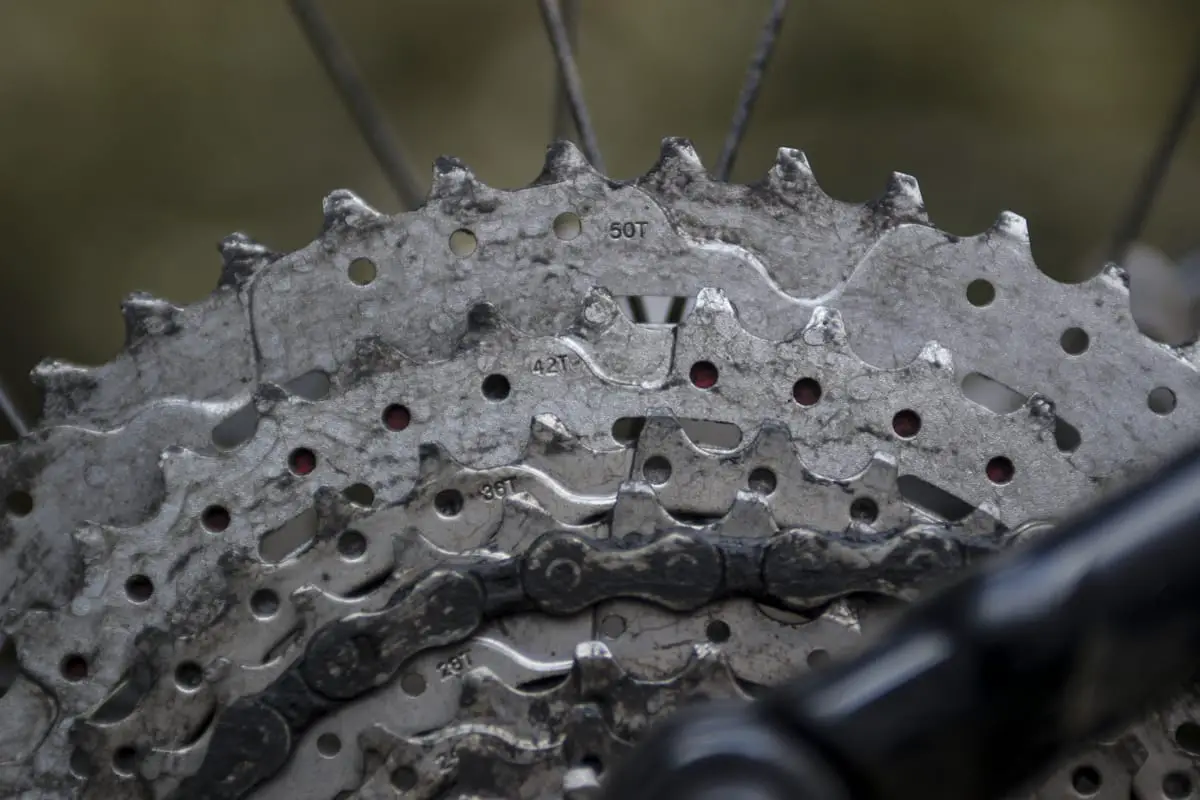
Speaking of compatibility, SunRace claims that the MX80 will work with both Shimano and SRAM 11-speed rear mechs. Through our collective experience of running the MX80 on several different test bikes however, we’ve come to some other conclusions.
I should probably point out at this stage that as makers of complete drivetrains, Shimano or SRAM would be unlikely to agree that a SunRace cassette is going to give you comparable shifting quality. You should also probably expect any warranty conversation with your local bike shop on your mech to be a little bit trickier should you decide to go beyond the recommended design limitations.
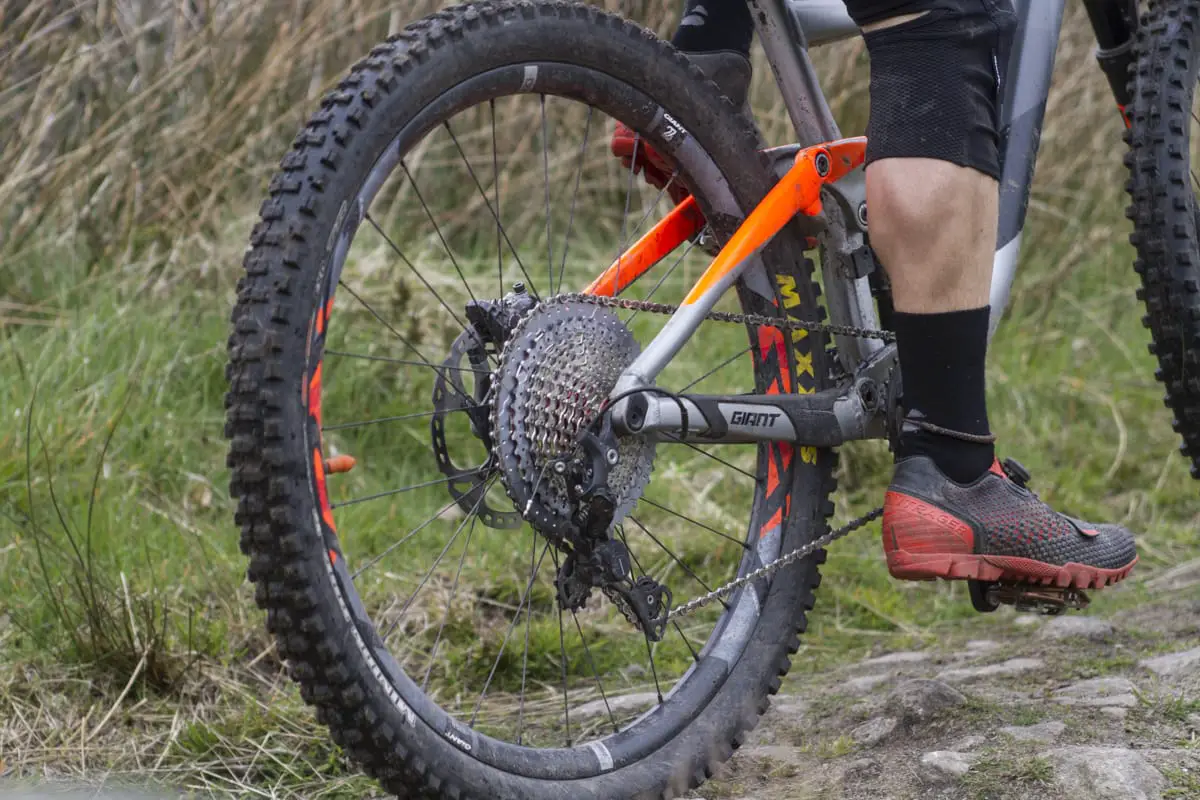
What Works, And What Doesn’t
The first bike we paired the MX80 cassette to was a Giant Trance 1, which came with a complete Shimano Deore XT 1×11 drivetrain with a medium cage rear derailleur and an 11-46t cassette. Fitting the SunRace cassette was straight forward, with only a few turns of the B-tension screw on the rear derailleur required to clear the bigger 50t sprocket. Shimano’s medium cage derailleurs have a listed maximum limit of 46t, but it didn’t seem to mind going up to the 50t. The chain length was a touch snug, but not out of the question. Everything shifted a-ok, and save for a bit of noise when pedalling in the 50t, it was all hunky dory.
Andi then fitted the cassette to a Production Privee Shan test bike with a SRAM GX 1×11 drivetrain, though quickly realised this wasn’t going to work. SRAM 11-speed derailleurs technically have a 42t limit, and even with the B-tension maxed out, the derailleur’s upper jockey wheel fouled on the 50t sprocket and wouldn’t clear it at all. If you’ve got a SRAM 1×11 drivetrain, then don’t bother with this cassette – it’s just too big for that rear mech.
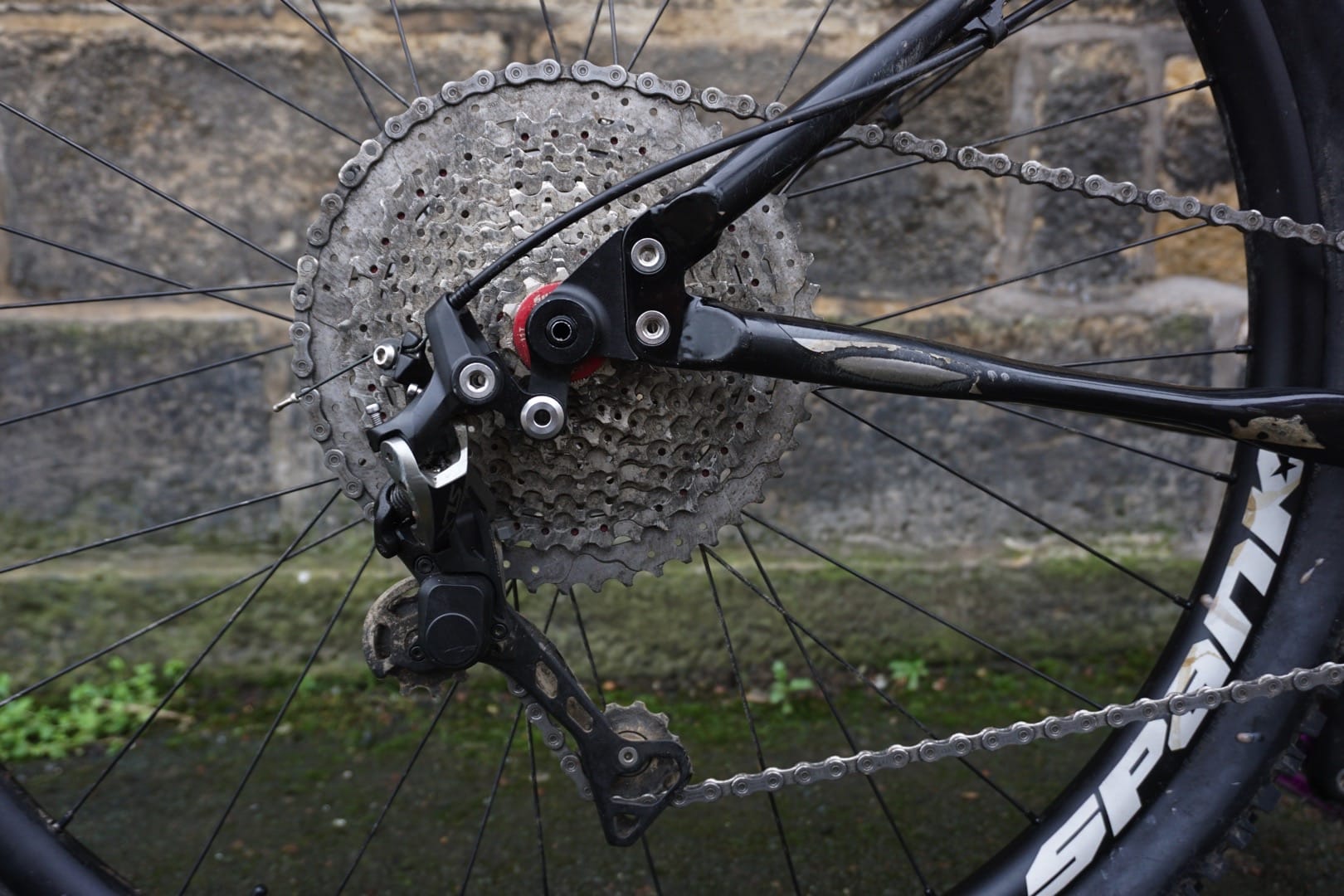
Next, Andi tried the MX80 cassette on his personal bike with a long cage Shimano SLX 11-speed rear derailleur. The fit was tight, but with a bit of tweaking, we managed to get everything shifting ok-ish. It’s worth noting here that Shimano long cage 11-speed derailleurs are designed to work with a 2×11 system, and so they have a listed maximum limit of 42t. Really, you’re asking a lot for it to get up to the 50t sprocket.
In use, shifting out of the 50t was a real problem – occasionally the derailleur just wouldn’t budge and required a swift kick with the heel of your shoe. If you timed the shift just-so, it could sometimes work, but it was far from ideal. You could potentially try something like an aftermarket derailleur cage from OneUp or Wolf Tooth, though we haven’t tried such a combo with the SunRace cassette.
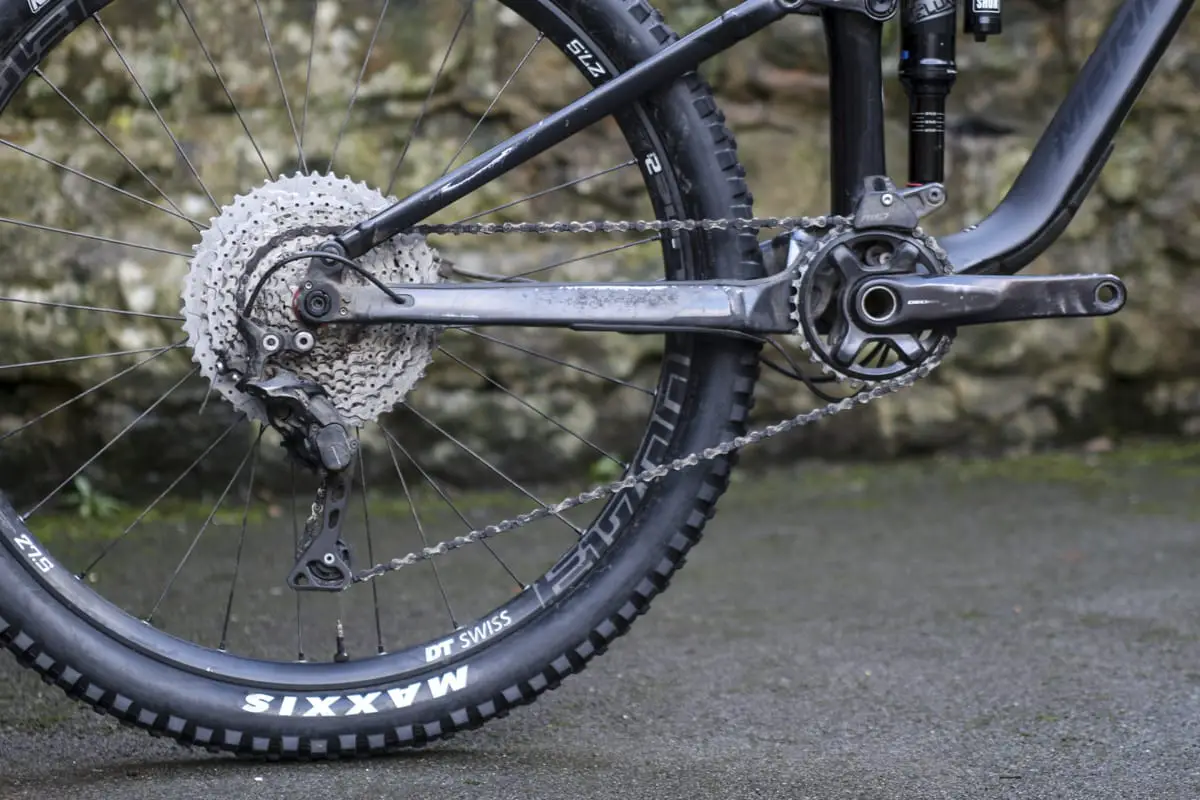
After Andi had finished battling with the MX80, I then tried it out on a Merida One-Sixty test bike. Like the Giant Trance, the Merida also had a full Shimano Deore XT 1×11 drivetrain with an 11-46t cassette and a medium cage derailleur. And just with the Giant, the MX80 cassette proved to be a doddle to setup on the Merida, with very little adjustment required to get the mech to clear.
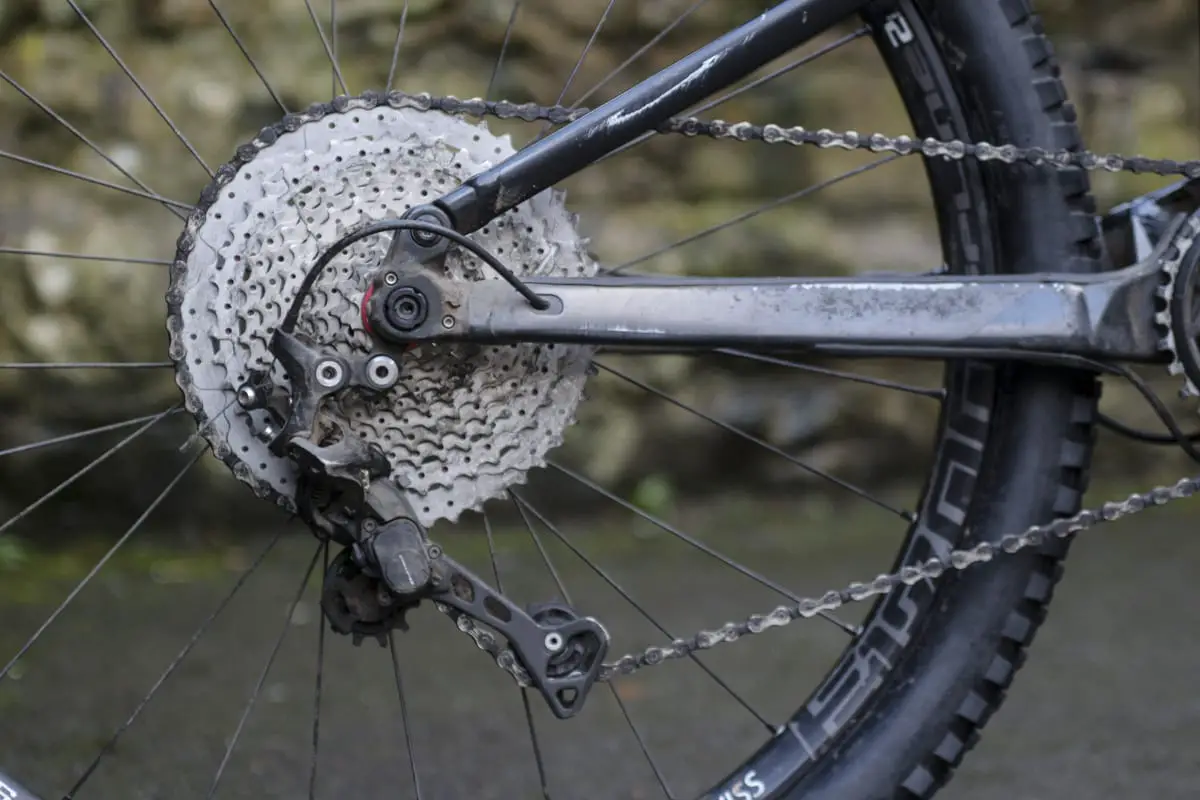
Shifting was spot-on both up and down the cassette, with minimal noise or grinding and no hesitation in the jump between the 42t to 50t sprocket. Everything just worked, and I was (again) surprised at how smooth the overall feel was. The shifting is without doubt lightyears ahead of using a cassette with a hop-up booster cog. The gears are more evenly stepped through the range, and it never feels like any of the gears are ‘the odd one out’. This is definitely a big advantage of using a cassette that is built around a specific ratio, and not one that has been modified. I’d even go so far to say that the MX80 cassette shifts almost as smoothly as the XT cassette that came off both the Giant and Merida, and so far, it’s lasting just as well too.
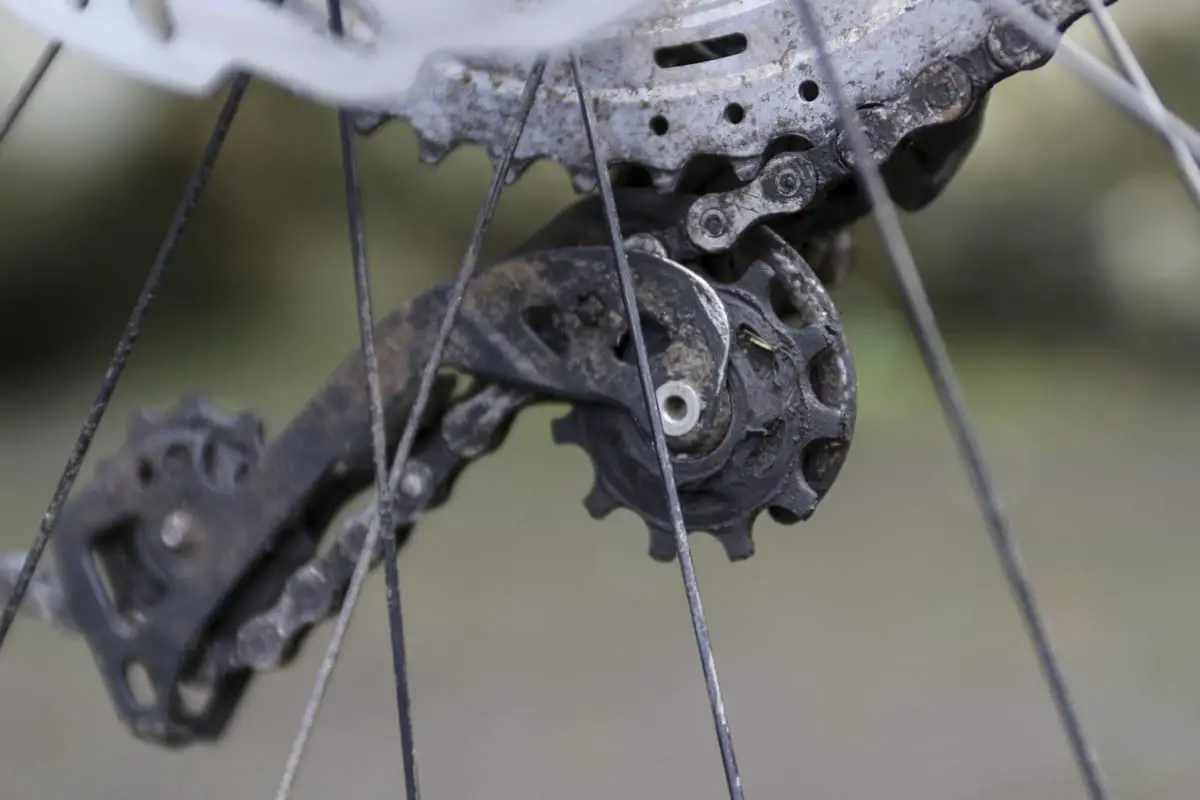
More importantly though, my knees were stoked on having that extra low-range for steep valley hillside climbs – the ones that go for a solid 30 minutes and feel like they’re sucking 1% of the life force out of you with each pedal stroke. On these climbs, that extra range comes into its own, with less fatigue creeping into muscles as the ride ticks on.
Of course a lot of these hills I could normally muscle up (and have done exactly that on a 1×10 drivetrain in the past), but as the odometer ticks over and you rack up more miles, that fatigue makes itself more apparent. Being able to stay seated and calm while twiddling uphill paid itself dividends on those longer rides. And once you’re used to that, you really start to wonder how you climbed with anything less.
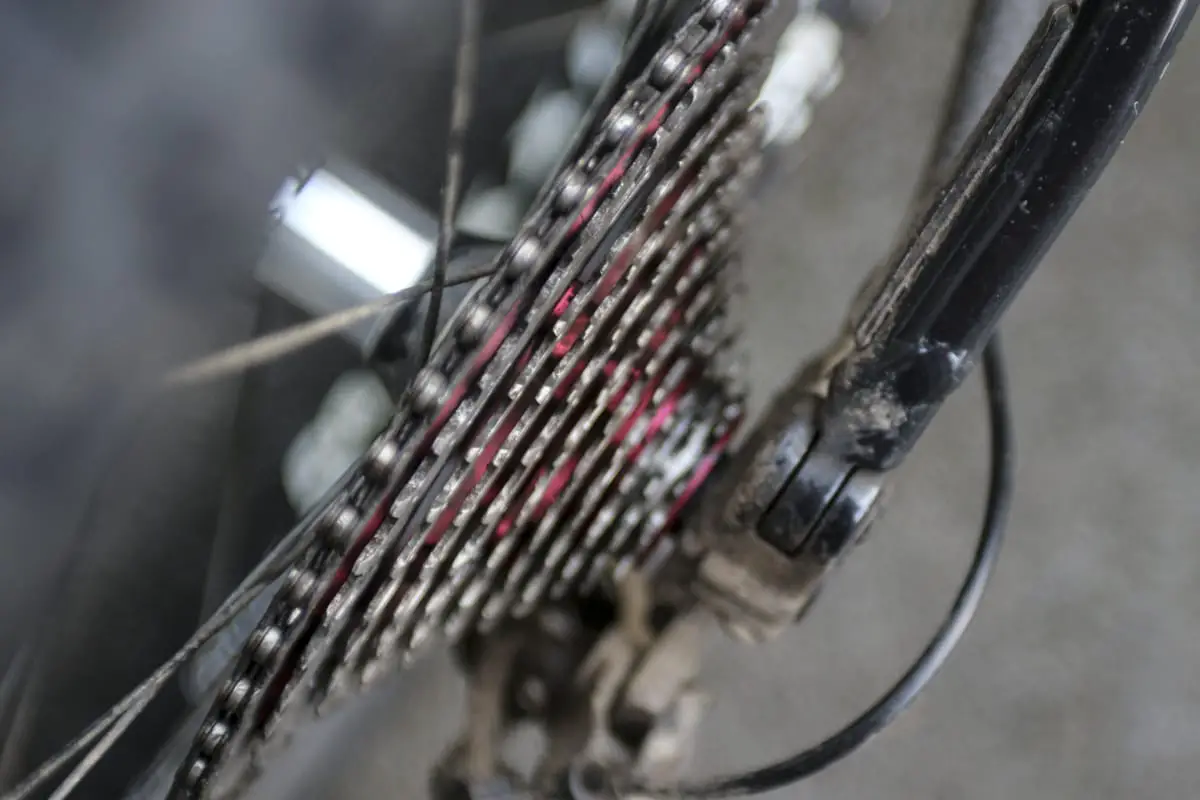
Before we wrapped up testing, there was one other combination that I was curious to try. With a 1×11 SRAM drivetrain, I tried fitting a 12-speed GX Eagle rear derailleur to the 11-speed shifter. As luck would have it, the setup worked. Surprisingly well. The Eagle rear derailleur is already purpose-built to clear a 50t sprocket, and combined with the 11-speed shifter, it lined up with each gear on the SunRace cassette without issue. This makes an interesting potential upgrade option; if you have a SRAM 1×11 drivetrain and you’re looking for more low-range, you could potentially purchase just the MX80 cassette and a GX Eagle rear mech, rather than a whole Eagle drivetrain.
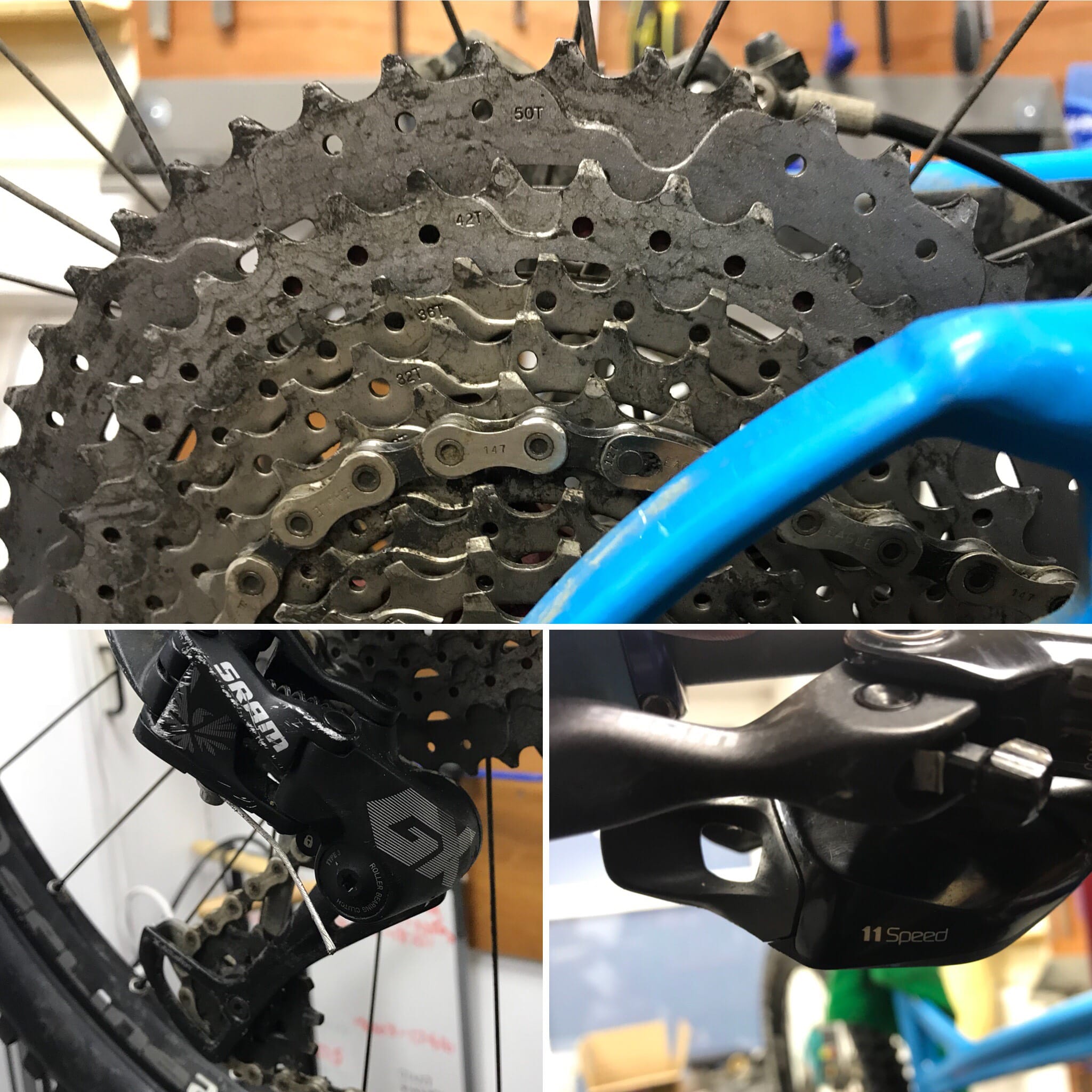
With any of the above combinations however, you will definitely not be hearing of any glowing recommendations from either SRAM or Shimano. This is the kind of product that has engineers (who have no doubt spent years getting a complete drivetrain system to work just so) weeping into their cornflakes or morning miso soup. As we’ve discovered, depending on the initial drivetrain set up, adding this cassette doesn’t always work just so, so a spot of mechanical fiddling should be anticipated if you’re considering purchasing it.
Overall
Depending on your drivetrain setup, the MX80 is a range-expanding upgrade that can offer you granny ring-like climbing abilities. Or for the racer-heads out there, that 454% range means you can potentially run a larger chainring for more top-end speed.
In our experience, it fits best with a Shimano 1×11 drivetrain and a medium cage derailleur (roughly 8.5cm between the jockey wheel pivots). If you’ve got a long-cage derailleur (roughly 9.5cm between the jockey wheel pivots) then it kinda fits, but it doesn’t work well, and some sort of modification is likely required to get it to work.
Once setup properly though, shift quality is excellent, and in our experience durability has been great too. Combined with the price, the MX80 cassette gets a big thumbs-up from us.

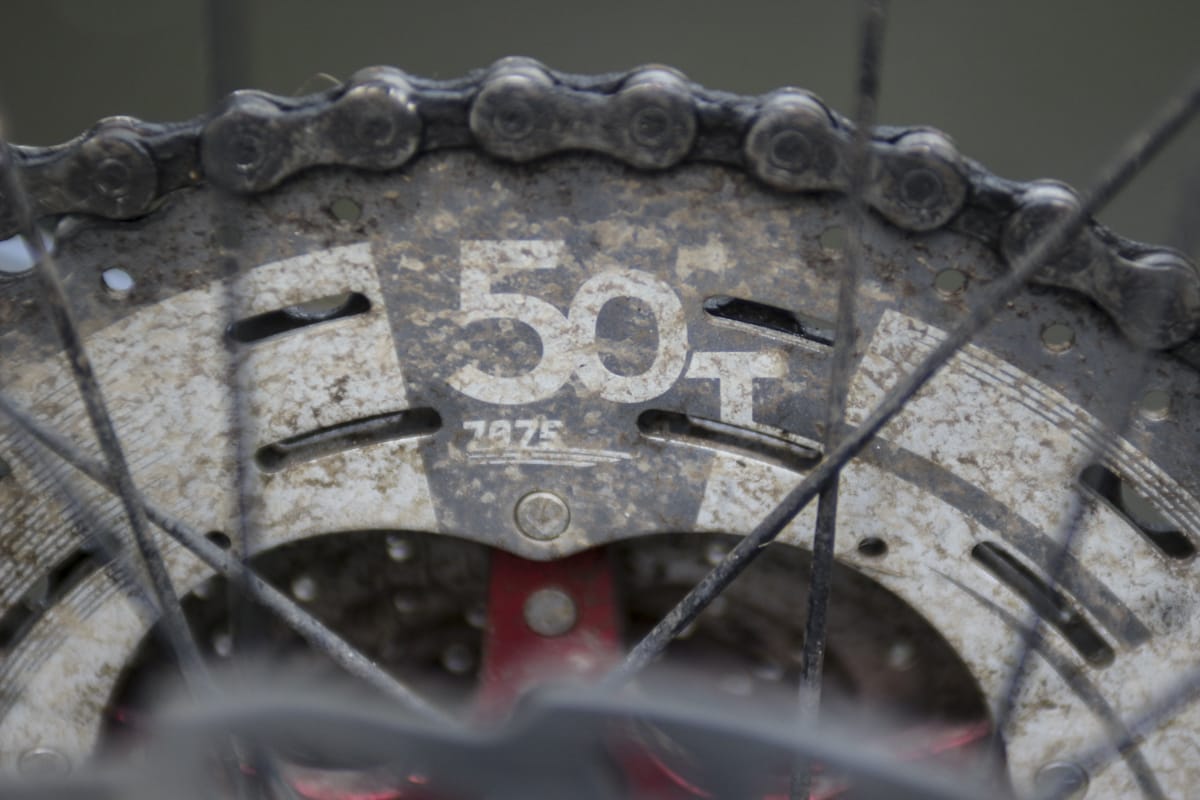




Dare I say it, that looks ridiculous?
Anyway, what happened to the whole ‘reducing unsuspended weight’ theory?
I fitted this to a friend’s bike which has an SLX M-7000-11-GS mech. It works ok but not terribly smoothly.
It would be useful to know exactly which model of XT mech it was that worked well as the sprocket compatibility specs vary widely between models in the same Shimano groupsets.
It would be really useful for people looking to use this cassette if you had a summary table with mech model numbers and how well or whether they work. The table at http://www.ison-distribution.com/uploads/sunracecompatablitychart.jpg isn’t much use as it contains a mech that doesn’t exist – there is no RD-M7000-11-SGS, only a M7000-10-SGS and a M7000-11-GS, which, bizarely, are totally different mechs. :-/
How is it that “downshifting out of the 50t was a real problem”? That’s the lowest gear. You can’t downshift from 1st gear!
Me? A pedant? I prefer “attention to detail”! 😉
Um, Eagle is designed to work with existing 1×11 drivetrains, too – just not ones shoehorned onto 8 speed freehubs. More options is good, but accuracy is good too…
I’m interested to know how the medium cage XT derailleur differs from the long cage in any way other than the obvious, cage length. I would have expected the long cage to be better suited to the job.
I’ve just fitted a Sunrace 11-40 10speed to my wife’s 2×10 xt set up as she wanted a lower gear. I had to tweek the b screw but the biggest issue was the cable clamp arm fouling the biggest sprocket. I filled a couple of mm of the end of the arm and it works a treat now.
A big fan of the sunrace 11-42 on my old 10 speed setup
My new bike came with NX 11speed, swapped for an XT-11-46 and its excellent, didnt go for teh sunrace as even their 11-46 is quite weighty
Maths not the reviewers strong point…..42-36 = 6 !
thanks for the sharing
Bear in mind the Production Privée mech hangers have shitty, non-spec geometry (check the upward angle of the link plate on the picture, and compare it to the flat angle on the Merida).
I had plenty of trouble getting my Zee mech to clear a 11-40 on my Oka, and in the end used friction paste and mounted the mech with the link facing slightly down, on the other side of the hanger stop. Disappointing PP still haven’t sorted that
Just got my 11-50 cassette delivered. Is there no help in adding a Goat Link to my GX11 to make it work??
Need to asap so I can order a GX12 mech asap to be ready when all this snow are gone! 🙂
http://www.tantrumcycles.com
According to several forum posts I have found the GX11 rear meck works just fine on 11-50 cassette.
Unfortunately the 29″ dropouts are delayed so I can not try it out on trails. Its there any point in testing with bare wheel one wo tyre? Or will cycling the suspension while shifting gears make a difference?
Just fitted the MX80 (black version) to my 2017 Giant Anthem 29er. I have a long cage XT derailleur (RD-M8000-SGS) at it works a treat. No modifications necessary. Sunrace also publishes a derailleur compatibility chart.